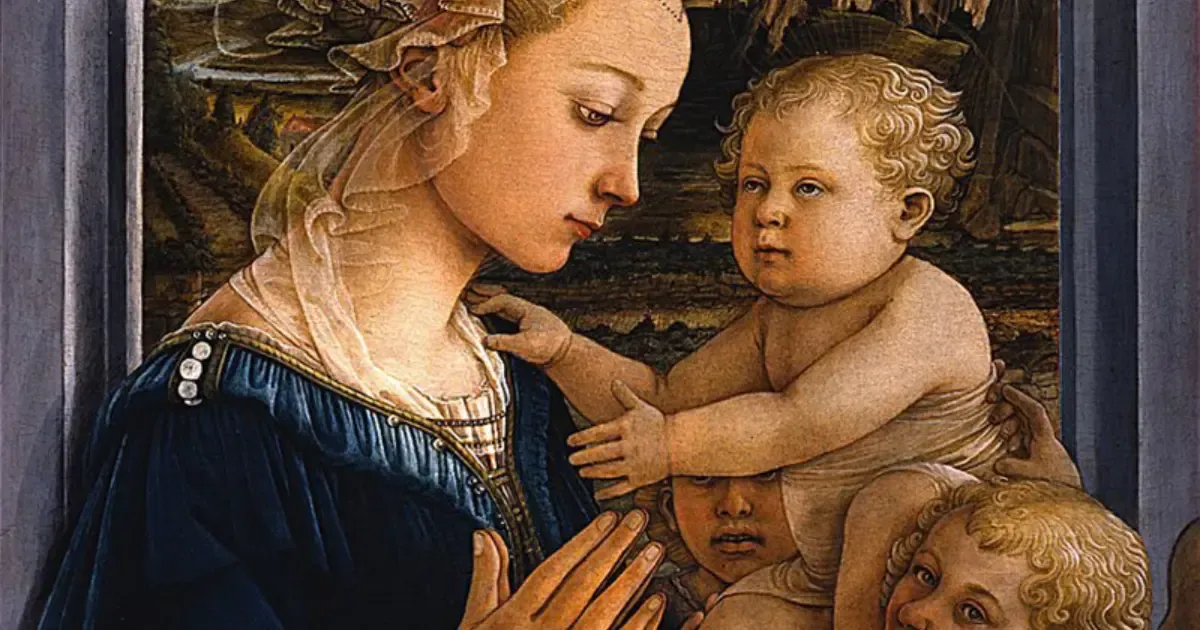
Madonna and Child with Two Angels
Madonna and Child with Two Angels is Filippo Lippi’s most famous piece and showcases an extraordinary spontaneity in its portrayal. The Virgin Mary is seated on a throne, from which only the soft, embroidered cushion and the carved arm are visible. She gazes intently at her son, turning towards him with hands clasped in prayer. Her expression is gentle and indulgent, almost melancholy, as if she can foresee the painful destiny that awaits her son. The young Jesus, covered only in swaddling, looks back at Mary, reaching out to her with both arms, supported by two angels. The angel in the foreground smiles and looks outward, as if inviting the viewer into the scene.
The close-up style of the painting, with the group depicted as little more than half figures placed in a small space and bordered by a Serena stone frame, makes this composition similar to many relief sculptures created by Florentine sculptors of the same period. The window in the background opens onto a vast and varied landscape, overlooking the sea with rocks, vegetation, and buildings. This holy image is rendered with a deep sense of humanity, both through the expression of affection and in the choice of clothing and hairstyles, which are inspired by the fashions of the late 15th century.
The Virgin is dressed elegantly, with a crown of pearls and veils woven into her hair, similar to the style of Florentine noblewoman of that time. The halos are barely hinted at: fine crowns and rays of light that do not obscure the landscape behind them. There is yet no confirmation that the Virgin’s face is modeled after Lucrezia Buti, the young nun from Prato who later became Lippi’s wife. The composition was a success from the start and was used as a model by many artists, including the young Botticelli, who was a pupil of Lippi.
The original destination of this holy image remains unknown; the earliest recorded information dates back to the late 18th century when it was housed in the Medici Villa of Poggio Imperiale in Florence. Lippi’s portrayal of the Madonna and Child with Two Angels combines his keen observation of human emotion with his skillful use of contemporary fashion, creating a timeless and deeply moving representation of this sacred scene. The painting’s success and influence on other artists, especially Botticelli, underscore its significance in the history of Renaissance art.
TOP SELLING UFFIZI TICKETS
Here’s your chance to get your Uffizi Gallery Tickets! Simply choose from one of our best selling and most popular Uffizi Tickets.
Also See
